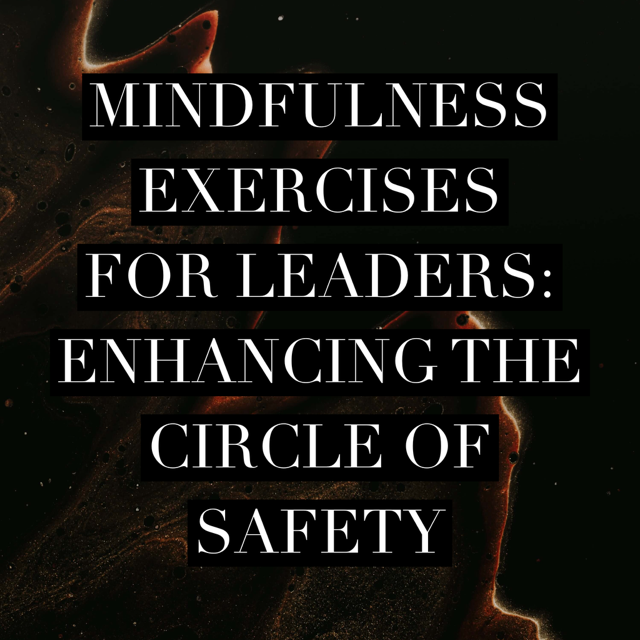
In our previous article, we explored the concept of building a Circle of Safety within teams, a principle highlighted by Simon Sinek in “Leaders Eat Last.” This Circle of Safety fosters trust, empathy, and collaboration, creating an environment where team members feel secure and valued.
But how can leaders enhance this Circle of Safety through mindfulness?
Mindfulness practices can help leaders stay present, reduce stress, and make more thoughtful decisions, ultimately strengthening the Circle of Safety for their teams. Here are some mindfulness exercises that leaders can incorporate into their daily routine.
Mindful Breathing
Mindful breathing is a simple yet powerful way to bring your attention to the present moment. As a leader, taking a few minutes each day to focus on your breath can help you stay calm and centred, even during a busy schedule.
Find a quiet place to sit or stand comfortably. Close your eyes and take a deep breath in through your nose, feeling your lungs expand. Exhale slowly through your mouth, letting go of any tension. Focus on the sensation of your breath entering and leaving your body. If your mind starts to wander, gently bring your attention back to your breath.
This practice can help you approach challenges with a clear and focused mind.
Body Scan Meditation
Body scan meditation is a technique that involves paying attention to different parts of your body, one at a time. This exercise can help you become more aware of your physical state and release any built-up tension.
Start by lying down or sitting in a comfortable position. Close your eyes and take a few deep breaths. Begin by focusing on your toes, noticing any sensations or tension. Gradually move your attention up through your feet, legs, abdomen, chest, arms, and head. As you scan each part of your body, take note of any areas of discomfort or relaxation. This practice can help you stay grounded and present, making it easier to respond to your team’s needs with empathy and understanding.
Mindful Listening
As a leader, effective communication is crucial for building trust and fostering a supportive culture. Mindful listening involves fully focusing on the speaker without interrupting or planning your response.
During conversations with your team, practice giving your full attention to the speaker. Notice their words, tone of voice, and body language. Avoid distractions and resist the urge to interrupt.
By practicing mindful listening, you can build stronger connections with your team members and create a more inclusive and supportive environment.
Loving-Kindness Meditation
Loving-kindness meditation, also known as Metta meditation, involves cultivating feelings of compassion and love towards yourself and others. This practice can help you develop a more empathetic and compassionate leadership style.
Find a quiet place to sit comfortably. Close your eyes and take a few deep breaths. Begin by silently repeating phrases such as “May I be happy, may I be healthy, may I be safe, may I live with ease.” After a few minutes, extend these wishes to others, starting with loved ones and gradually including your team members and even people you may have conflicts with.
This practice can help foster a sense of connection and compassion, both towards yourself and others.
Mindful Reflection
Taking time for mindful reflection can help you gain insights into your leadership style and identify areas for improvement. Set aside a few minutes each day to reflect on your experiences, decisions, and interactions with your team. Consider what went well, what challenges you faced, and how you can improve. Write down your reflections in a journal to track your progress over time.
This practice can help you stay self-aware and make more thoughtful decisions that enhance the Circle of Safety for your team.
Conclusion
Incorporating mindfulness exercises into your daily routine can help you enhance the Circle of Safety for your team.
By practicing mindful breathing, body scan meditation, mindful listening, loving-kindness meditation, and mindful reflection, you can stay present, reduce stress, and make more thoughtful decisions.
These practices can help you build trust, empathy, and a supportive culture, ultimately creating a thriving team. So, take the first step today and start incorporating mindfulness into your leadership practice.
Leave a Reply